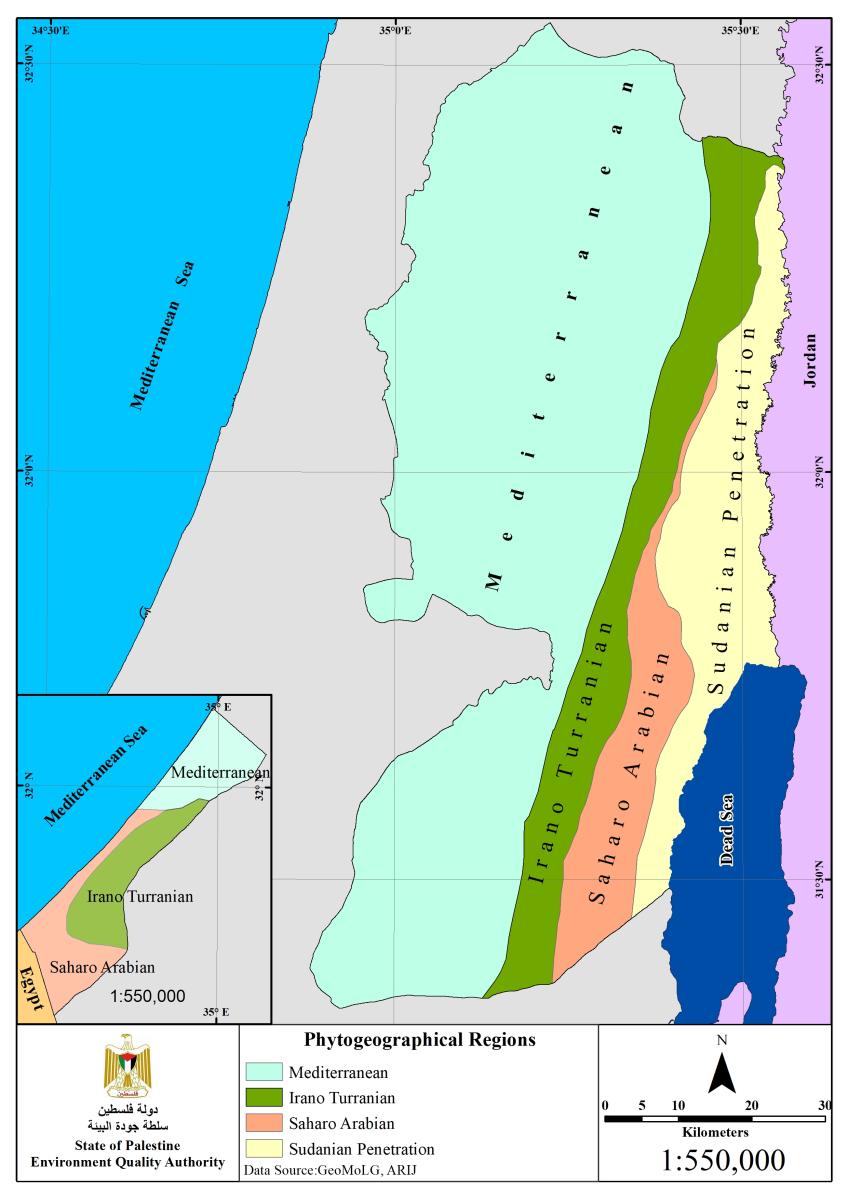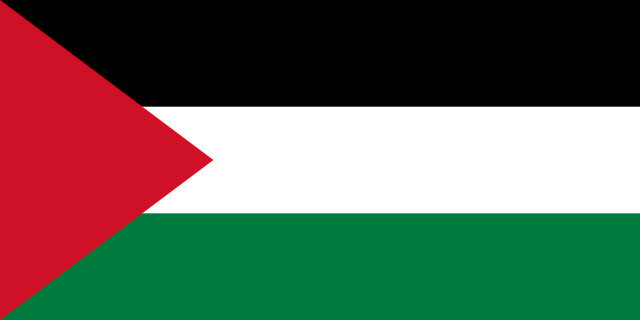Despite its small area (5655 km²), the Palestinian Territory of the West Bank includes four main biogeographical zones, namely Irano-Turanian, Saharo-Arabian, Sudanian Penetration, and Mediterranean (Zohary 1947; Whyte 1950; Werner 2016). Rainfall, temperature, altitude, and soil composition vary greatly among these zones. The geographic position enabled Palestine to include faunal elements from Palaearctic, Ethiopian and Oriental regions (Por 1975; Atallah 1977). The four biogeographical zones of the Palestinian Territories are very close to each other. With a maximum width of the West Bank not exceeding 60 km, the Irano-Turanian zone is adjacent to the eastern borders of the Mediterranean zone, with an abrupt delineation following the common vegetation (Sarcopoterium spinosum) and rainfall. Similarly, the boundaries for the Irano-Turanian, Saharo-Arabian, and Sudanian zones are all close.
Mediterranean zone: This zone represents most of this Palestinian Territory, extending from Hebron across Jerusalem north to Jenin. Soil type is dominated by terra rossa and pale rendzinas with patches of grumusols, brown and pale rendzinas and solonchalks. Annual rainfall ranges from 400 to 700 mm, with occasional snowfall. Average minimum temperatures range from 8 to 12 °C during winter, and average maximum temperatures range from 22 to 28 °C in summer. Forests within this area include Ceratonia siliqua, Pinus halepensis, Pistaci alentiscus, Pistacia palaestina, Quercus caliprinos, Rhamnus palaestinus, with shrubs, including Sarcopoterium spinosum and Retama raetam (Zohary 1947; Ghattas, Hrimat, and Isaac 2006). The core of the Mediterranean area is dominated by maquis and forests surrounded by forest of Ceratonia siliqua and Pistaci alentiscus. Semi-steppe garigue and steppe vegetation also surrounds the eastern borders of the arid regions of the Mediterranean zone (Danin 1992).
Irano-Turanian zone: This zone represents a narrow strip stretching from Tubas region through eastern Jerusalem and southern Hebron hills. This zone is considered a transitional zone separating the Saharo-Arabian and the Mediterranean zones. Annual rainfall ranges from 150 to 300 mm, with average minimum temperatures ranging from 10 to 30 °C during winter and average maximum temperatures reaching up to 34 °C in summer. Soil types exhibit several forms of brown lithosols and loessial arid brown soil to brown and pale rendzinas. In general, flora consists of both semi-steppe batha and steppe vegetation dominated by Artemisia sieberi and Noaea mucronata (Zohary 1947; Danin 1988).
Saharo-Arabian zone: This zone extends from around Jericho, extending southwards in between the Sudanian Penetration and the Irano-Turanian zones, and becomes wider in the south (Bani Na’im). Annual rainfall ranges from 50 to 250 mm, with average minimum temperatures ranging from 14 to 18 °C during winter and average maximum temperatures reaching up to 32 °C in summer. Altitude ranges from −250 m b.s.l. to 370 m a.s.l. Soil is mostly brown lithosols and loessial serozems. Flora is represented by the desert and steppe vegetation cover, including Anabasis articulata, Salsola inermis, Stipa tortilis and Atriplex parvifolia (Zohary 1947; Danin 1988).
Sudanian zone: It extends from the middle of the Jordan Valley southwards along the Jordan River and the shores of the Dead Sea. Annual rainfall ranges from 50 to 100 mm, with average minimum temperatures ranging from 10 to 14 °C during winter and average maximum temperatures reaching up to 34 °C in summer. The altitude ranges between −390 and −50 m b.s.l. Soil types are dominated by bare rocks and lithosols around the Dead Sea, to solon chalks to regosols around the Jordan River. Savannoid vegetation dominates the western borders of the Dead Sea, while wet saline vegetation is confined to the northern area around the Dead Sea (Danin 1988), with distinctive species such as Acacia tortilis, Calotropis procera, Ziziphus spina-christi, and Balanites aegyptiaca (Zohary 1947; Danin 1988).
This section from (Amr et al., 2018)
See References in the Publications

